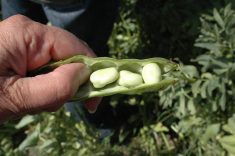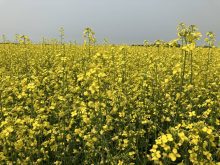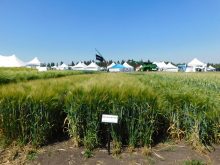The U.S. housing downturn means fewer new homes being built, fewer new lawns being seeded and therefore lower demand for creeping red fescue, a crop commonly grown in the Peace region of Alberta and British Columbia.
Creeping red fescue is a hardy, low-growing grass that will form a dense sod. It performs well on varying soil types and tolerates shady conditions.
The crop, more commonly known as turfgrass, is grown by about 500 to 700 producers throughout the Peace, says David K. Wong, market specialist for Alberta Agriculture based in Grande Prairie.
Read Also

New crop insurer policy enables easier startup for faba beans
Agriculture Financial Services Corporation updated its normals for faba beans, which may open the door for more Canadian producers to feel comfortable growing the pulse crop in the future.
“We had less acres this year than normal and we’re down about 20 to 30 per cent from the average,” says Wong. Yield is also down. Instead of the normal yield of 350 to 400 pounds per acre, yields averaged between 300 to 350 pounds per acre this year.
Ninety nine per cent of the fescue grown in the province is grown in the Peace region, mainly around Beaverlodge, but there are also growers in Spirit River, Woking, Hines Creek and Fairview.
Some growers may have decided not to grow fescue due to low prices and decreased demand, says Wong. “Due to the economic situation and the recession, the demand has really died due to the lack of housing starts,” he said.
Creeping red fescue is usually included in lawns, grassy parks and golf courses, but construction on new properties has slowed due to the economic crisis. Ninety per cent of the fescue grown in Canada goes to the American market. Many processors have a great deal of fescue in their inventory right now due to the downturn. “Fescue isn’t like other crops,” says Wong. “The price changes according to the demand, so the current quoted price doesn’t reflect the value of the seed.”
The dry conditions across the Peace region created varied yields across the region. However, good snow cover last winter helped bring the crop up early in the spring, says Wong. The fescue harvest started during the first week of August and was completed two weeks later as there was no rain to slow down the harvest.















